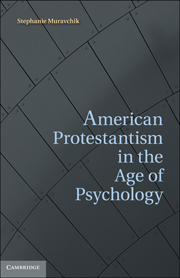Book contents
PART THREE - THERAPY AS EVANGELISM IN THE SALVATION ARMY
Published online by Cambridge University Press: 05 July 2011
Summary
Introduction
The Salvation Army has tried to convert homeless men since the early years of the twentieth century. This mission was gradually transformed into a rehabilitation program in the wake of World War II. It was housed in institutions that, for many decades, bore the name Men's Social Service Centers (MSSCs). The army's ability to cast as therapeutic its evangelism of the indigent depended on the psychoreligious efforts of other people of faith. It relied in part on the mid-century convergences described in the previous two case histories – those that were forged between pastoral guidance and therapeutic counseling, between Christian fellowship and group therapy. The centers drew on lay Christians and clergy to help counsel the men they served, whom they called their beneficiaries. MSSCs hosted groups of Alcoholics Anonymous (or more religiously orthodox imitators) as the antiaddiction component of their program. Although the army used others' efforts, it also contributed its own innovations about what constituted therapy and who could administer it. It was among the pioneers of the American Protestant evangelical community to recognize the potential of psychoreligious syntheses.
This therapeutic reorientation in no way enervated the evangelical efficacy of this mission. In fact, the psychoreligious blend that the army forged in the postwar period paved the way for greater salvific success. It enhanced the army's ability to build community among isolated men and to help set them on a path toward greater social responsibility.
- Type
- Chapter
- Information
- American Protestantism in the Age of Psychology , pp. 159 - 160Publisher: Cambridge University PressPrint publication year: 2011



